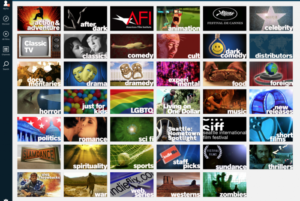
Digital radio broadcasting trends are rapidly evolving, reflecting a significant shift in how we consume audio content. With advancements in technology and changing audience preferences, digital radio is not just keeping pace; it’s setting the stage for a whole new era of broadcasting. This exploration will delve into the latest developments, predictions for the future, and the integration of digital radio with various sectors, showcasing how it’s transforming the audio landscape.
From the rise of streaming services to the embrace of artificial intelligence, the world of digital radio is undergoing exciting changes. These trends not only highlight technological advancements but also reveal the diverse ways in which listeners are engaging with radio content today.
Current Trends in Digital Radio Broadcasting
The landscape of digital radio broadcasting is continuously evolving, shaped by technological advancements and shifting consumer habits. As technology progresses, digital radio adapts, catering to the needs and preferences of modern audiences.
Technological Advancements in Digital Radio
Recent technological innovations have significantly enhanced the capabilities of digital radio. Key advancements include:
- High-Definition Audio: Enhanced sound quality makes digital radio a more appealing choice for listeners.
- Smart Devices: The rise of smart speakers and home assistants has made accessing digital radio more convenient, leading to increased listenership.
- Podcasts and On-Demand Content: The integration of podcasts into radio offerings allows listeners to engage with content on their own terms.
Impact of Streaming Services on Traditional Radio
Streaming services have revolutionized how audiences consume audio content, providing fierce competition to traditional radio. This shift has resulted in:
- Increased Listener Expectations: Audiences now expect personalized experiences, leading to traditional broadcasters adopting similar strategies.
- Ad Revenue Shifts: Advertisers are increasingly allocating budgets to streaming platforms, impacting traditional radio’s revenue streams.
Changing Audience Demographics
The demographic landscape of radio listeners is changing, with younger audiences gravitating towards digital formats. Factors influencing this shift include:
- Age and Tech Savvy: Younger generations are more comfortable with technology and prefer digital platforms over traditional radio.
- Content Variety: Digital radio offers a wider range of content, catering to diverse interests that appeal to younger demographics.
Future Predictions for Digital Radio
Looking ahead, digital radio is set to undergo further transformations, driven by emerging technologies and evolving audience expectations. Predictions suggest exciting developments on the horizon.
Anticipated Advancements in Digital Radio Technology
Future advancements in digital radio technology are expected to enhance user experience significantly. Some key predictions include:
- Advanced Data Analytics: Broadcasters will leverage data insights to create targeted content that resonates with specific audiences.
- Interactive Features: Features that allow listeners to interact with content in real-time will become more prevalent.
Potential Market Shifts
The landscape of radio broadcasting is likely to see significant market shifts influenced by several factors:
- Merger and Acquisition Trends: As companies consolidate, larger entities will dominate the digital radio space.
- Content Ownership: Control over exclusive content will be a key factor for competitive advantage.
Impact of Emerging Technologies like AI
Artificial intelligence will play a crucial role in shaping the future of digital radio. Its influence is expected to manifest in:
- Personalized Recommendations: AI algorithms will enhance content discovery by recommending shows and music based on listener preferences.
- Content Creation: AI-generated content could become a staple, providing broadcasters with new ways to engage audiences.
Telecommunications and Digital Radio Integration
The integration of telecommunications infrastructure is vital for the effective functioning of digital radio. As technology advances, this relationship becomes increasingly important.
Telecommunications Infrastructure Support
A robust telecommunications infrastructure underpins digital radio broadcasting. Key elements include:
- Network Reliability: High-quality connections ensure seamless streaming and minimal interruptions.
- Data Transmission Capabilities: Enhanced data transmission speeds allow for higher-quality audio and richer content experiences.
Role of 5G Technology
The rollout of 5G technology is set to revolutionize digital radio services. Potential benefits include:
- Faster Streaming: 5G will enable uninterrupted streaming of high-definition audio content.
- Increased Connectivity: More devices can connect simultaneously, expanding the listener base.
Telecommunications Partnerships with Radio Stations
Successful partnerships between telecommunications companies and radio stations have proven beneficial. Examples include:
- Joint Marketing Campaigns: Collaborations can lead to enhanced visibility and reach for both parties.
- Shared Resources: Pooling resources for technology deployment can reduce costs and improve service quality.
Role of Literature and Libraries in Digital Radio
Libraries are increasingly recognizing the potential of digital radio as a tool for promoting literacy and education. This collaboration opens up new avenues for community engagement.
Libraries Promoting Literacy Through Digital Radio
Libraries leverage digital radio to foster a culture of reading and learning. Key strategies include:
- Storytelling Programs: Engaging storytelling sessions can be broadcasted to reach wider audiences.
- Educational Content: Libraries can produce programs that provide educational resources and workshops.
Integrating Radio Broadcasts into Library Programs
A framework for integrating digital radio into library programs can enhance community outreach. Components of this framework include:
- Collaborative Content Creation: Libraries can partner with local authors and educators to create unique content.
- Event Promotion: Utilizing radio broadcasts to promote library events can drive attendance and engagement.
Importance of Archiving Digital Radio Content
Archiving digital radio content is crucial for preserving cultural heritage and supporting research. The importance of this practice includes:
- Cultural Preservation: Maintaining historical broadcasts can provide insights into societal changes over time.
- Research Opportunities: Archives serve as valuable resources for academic research and education.
Influence of Music and Radio on Pop Culture
Digital radio significantly shapes music trends and listener preferences, reflecting the dynamic nature of pop culture.
Digital Radio Shaping Music Trends
The relationship between digital radio and music trends is increasingly intertwined. Important aspects include:
- Curated Playlists: Digital radio stations often create curated playlists, influencing what songs become popular.
- Artist Exposure: Emerging artists gain visibility through digital radio platforms, impacting their career trajectories.
Online Radio vs. Traditional Radio

The impact of online radio differs from that of traditional radio in significant ways:
- Music Discovery: Online radio offers algorithms that help listeners discover new music tailored to their tastes.
- Listener Engagement: Digital platforms allow for real-time listener interaction, enhancing the overall experience.
Case Studies of Artists Gaining Fame
Numerous artists have found success through digital radio platforms. Notable examples include:
- Billie Eilish: Gained significant traction through online radio features, leading to mainstream success.
- Chance the Rapper: Utilized digital radio to release music and grow his fan base without traditional label support.
Movies and Television’s Connection to Digital Radio
The relationship between digital radio, movies, and television is multifaceted, significantly influencing each other’s domains.
Digital Radio Impacting Soundtracks
Digital radio influences soundtracks and audio branding in films, enhancing the overall viewer experience. Key points include:
- Curated Soundtracks: Filmmakers often curate songs from digital radio playlists to resonate with audiences.
- Brand Partnerships: Collaborations with radio stations for soundtrack promotion can boost visibility for both parties.
Cross-Promotion Between Digital Radio and TV Shows
The synergy between digital radio and television creates opportunities for cross-promotion. Examples include:
- Radio Shows Featuring TV Stars: Radio segments featuring actors can draw their fan base to the radio platform.
- Promotional Events: Joint events can leverage both mediums for maximum audience reach.
Influence of Radio on the Movie Industry
Radio plays a significant role in shaping the movie industry. Notable influences include:
- Publicity Campaigns: Radio promotions can significantly elevate a film’s visibility prior to release.
- Audience Feedback: Radio listeners often provide valuable feedback that can inform movie marketing strategies.
Global Perspectives on Digital Radio Broadcasting
Digital radio broadcasting is embraced differently across the globe, reflecting regional preferences and technological capabilities.
Embracing Digital Radio Technologies Worldwide
Various countries have adopted digital radio technologies at different rates, influenced by cultural and economic factors. Observations include:
- Europe: Many European countries have fully transitioned to digital radio, showcasing successful implementation.
- Asia: Countries like Japan are exploring digital radio potential, focusing on enhancing content delivery.
Successful Digital Radio Initiatives
Case studies of successful digital radio initiatives offer insights into best practices:
- BBC Sounds: The BBC has created a platform that integrates radio, podcasts, and music, enhancing user engagement.
- Australia’s DAB+: The DAB+ initiative has successfully expanded access to digital radio across the country.
Cultural Considerations in Global Adoption
Cultural factors significantly impact the global adoption of digital radio. Key considerations include:
- Language Diversity: Content must cater to various languages and dialects to ensure inclusivity.
- Content Preferences: Regional tastes and preferences should guide programming decisions for successful engagement.
Challenges Facing Digital Radio Broadcasting
Despite advancements, digital radio broadcasting faces several challenges that need to be addressed to ensure its continued growth.
Primary Obstacles for Digital Radio Broadcasters
Digital radio broadcasters encounter various obstacles that can hinder growth. These challenges include:
- Market Saturation: Increased competition from numerous platforms makes it challenging to attract and retain listeners.
- Monetization Issues: Finding sustainable revenue models remains a significant hurdle for many broadcasters.
Regulatory Challenges in Different Regions
Regulatory frameworks vary widely, affecting the digital radio landscape. Key challenges include:
- Licensing Restrictions: Complex licensing requirements can impede expansion efforts for broadcasters.
- Content Regulations: Varying regulations on content can complicate programming decisions and limit creativity.
Strategies for Overcoming Technical Challenges
To navigate technical challenges, broadcasters can adopt several strategies:
- Investing in Technology: Continuous investment in the latest technology can enhance service quality and reliability.
- Collaborating with Tech Companies: Partnerships with technology firms can streamline updates and improve infrastructure.
Final Wrap-Up
As we wrap up our discussion on digital radio broadcasting trends, it’s clear that the future is bright for this medium. The integration of new technologies and the evolving preferences of audiences are paving the way for innovative broadcasting solutions. By understanding these trends, stakeholders can better navigate the challenges and opportunities that lie ahead, ensuring that digital radio continues to thrive in an ever-changing landscape.
FAQ
What are the main technological advancements in digital radio?
Recent advancements include improved audio quality, integration with mobile devices, and enhanced streaming capabilities.
How are streaming services impacting traditional radio?
Streaming services attract younger audiences and offer on-demand content, challenging traditional radio’s listener base.
What role does AI play in digital radio broadcasting?
AI enhances personalization of content, helps in music curation, and improves listener engagement through recommendations.
What challenges do digital radio broadcasters face?
Challenges include regulatory hurdles, competition from streaming platforms, and the need for continuous technological upgrades.
How can libraries utilize digital radio effectively?
Libraries can integrate digital radio into educational programs, promoting literacy and providing access to diverse audio content.





